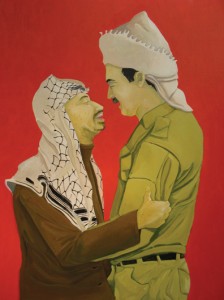In my past posts I usually focused mainly on the Freedom Speech. However, as the url on my blog states this is about this blog is about first amendment rights. Among the first amendment rights falls the Freedom of Religion. In this blog post I am going to look in depth at one particular case that fits under the Freedom of Religion, but also Freedom of Expression and Freedom of Speech.
This case originally took place in December of 1999, but has made a reappearance in the news recently. Brandi Blackbear was a 15 year old student at the time attending Union Intermediate High School. She was suspended because school officials found evidence that she might disturb the peace of learning. I think the easiest way to tell the story is to give factual background information and then present Brandi’s version of events.
Brandi Blackbear was a fan of Stephen King and idolized him. She was an outcast who dyed her hair and wore gothic makeup. She also practiced Wicca and would Hex classmates and teachers out loud. Her transition in her look though, took place ten days after the Columbine shooting. People started worrying that her transformation was because of the shooting. When rumors started up school officials checked her bag for a gun. When they failed to find a gun they took her journals where she would write short stories. In one of the short stories a boy was shot on the bus (the boy’s description and name did not match any student). She was then suspended for five days.
The following year Brandi’s parents sued the school, accusing the school of persecuting her for being a Wicca. Brandi claims that when she was being suspended the principal made a comment about how she needed to stop casting hexes on people. Brandi had apparently cast a hex on her art teacher and later in the day the teacher went to the hospital with appendicitis. She claims the only reason she got in trouble was because the school officials did not approve of her being a Wicca.
If Brandi is right then the school did violate Freedom of Religion. You cannot suspend someone for practicing a religion or accuse someone of committing a crime because of it. That part is laid out clearly. The courts, however, ruled in the schools favor since Brandi had not previously mentioned what the principal had supposedly said.
The part that is still open for debate and why it is still talked about in modern time, is the searching of her bag. You are not allowed to have your bag searched in a public school without a police officer and a parent present. Furthermore, the school officials were looking for a gun and failed to find what they were looking for. If this was a search warrant the officials would not have been allowed to take anything else from her, including the journals. Brandi claimed her short stories were inspired by her Wicca religion, including the one with a boy being shot on the bus.
The school suspended Brandi based on this story. What this whole blog is coming down to is do you think the school was right to do it? School officials feared Brandi would try to hurt other students since she thought of it before in her writings. At the same time Brandi claimed her writings were an outlet for her emotions and religion. If the Freedom of Speech, Religion, and Expression are taken into consideration, then she should have been allowed to write stories like this. At the same time, even I would be worried about her intentions versus her thoughts.
Another way to think about this is if you were sitting next to someone in class who wrote about people getting stabbed in the bus or in class, what would you do? Do you think the officials should have drawn the line here? Do you believe her rights should have been protected?
In my opinion I think the school officials made the right call. Her mood and attitude went through a dramatic shift after the Columbine shooting. Furthermore I think writings about murdering students could show signs that something is wrong. This is just my opinion. What do you think?
My sources for this post come from the following articles:
http://www.people.com/people/archive/article/0,,20133065,00.html
 As many of you reading this know by now, my topic is about the First Amendment Rights in schools. Every week I try to find dif
As many of you reading this know by now, my topic is about the First Amendment Rights in schools. Every week I try to find dif